Installing the right tires on your vehicle is essential to the overall performance and safety of your vehicle. Your tire choice should reflect the conditions in which you drive and your preferences for vehicle response and handling. To make the most informed decision, though, you must understand how to read tire size when it's time to buy tires.
Thankfully, determining the correct tire size for your vehicle is relatively simple. All the information you need is immediately available either in your owner's manual or somewhere on the vehicle itself. Already know how to read tire size numbers? Skip the explanation and find the right Bridgestone tire for your vehicle online or by visiting a Bridgestone tire dealer near you.
While actual, physical measurements like width and diameter are factors in finding the right tire size, there are additional details to consider. Knowing how to read car tire sizes also means understanding terms like load index and speed rating that affect your vehicle's overall capabilities.
No matter what vehicle you drive, finding the manufacturer-recommended tire size should be easy. The best place to start looking is the owner's manual.
Don't worry if you can't locate the manual; you may also find a tire fit guide in these locations:
You can also find tire size data on the sidewall of your current tires (assuming they're the proper size). However, no matter where you find your tire size, you will have to decipher a sequence of numbers and letters. Don't worry if it looks confusing at first — every letter and number has a straightforward meaning. Let's break down how to read car tire size.
Let's take a look at what each number or letter stands for, one by one, in the order they appear in your tire size data. We'll be using this tire size as an example: P225/70R16 91S.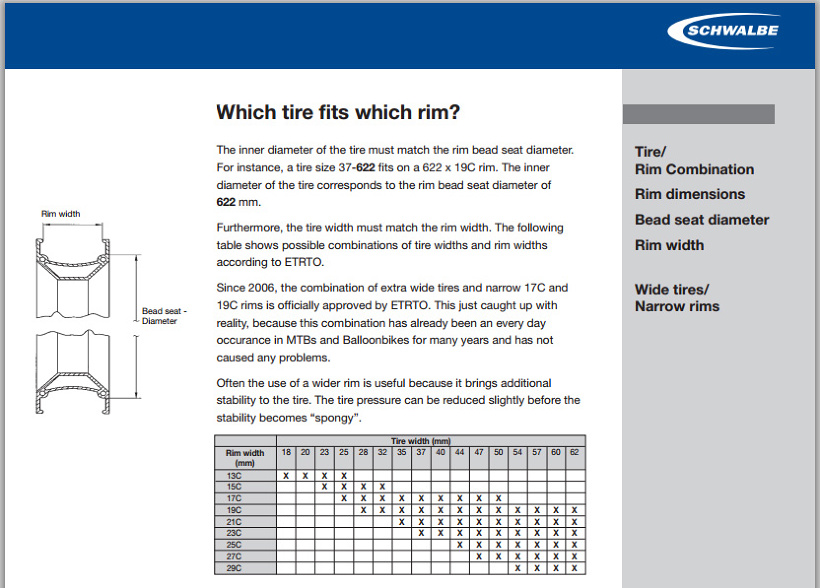
For most vehicles, you'll see the letter "P" before the number sequence begins: P225/70R16 91S. The "P" is short for "P-metric," which is a designation by the Tire and Rim Association for a "passenger car" tire type. A "P" signifies the tire was designed to primarily be used on passenger vehicles, which can include cars, minivans, SUV's and other light-duty pickup trucks.
If you see "LT" instead of "P," it's because you need "light truck" tires – "LT" is short for "LT-metric," which is a designation by the Tire and Rim Association for a "light truck" type tire. Light truck tires are designed to be used on vehicles capable of carrying heavy cargo or pulling trailers.
Similarly, "T" stands for "temporary" and is for your spare tire. If you see "ST," that means "special trailer." A special trailer tire is never installed on the drive or steer wheels. It's only intended for use on trailer axles.
The first number to appear in your tire size information is the width, in millimeters, of the correct tires for your vehicle: P225/70R16 91S.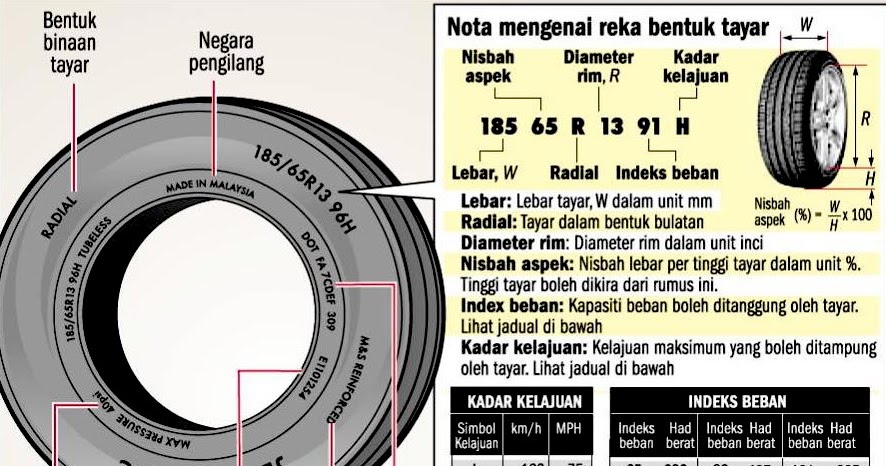
Tire width always refers to the measurement from one sidewall to another. Thus, a tire with the measurement "P225" is for a passenger vehicle and has a nominal width of 225 millimeters.
After the slash mark, the next number you see is for the tire's aspect ratio, which essentially tells you how tall your tire's profile is: P225/70R16 91S. Aspect ratios are delivered in percentages. Tire makers calculate the aspect ratio by dividing a tire's sidewall height by its width. If a tire has an aspect ratio of 70, it means the tire's height is 70% of its width.
Lower aspect ratio tires, such as a 60 series, generally offer vehicle handling performance advantages over higher aspect ratio tires, such as a 75 series.
After the aspect ratio comes a letter to indicate the tire's construction: P225/70R16 91S. "R" refers to the internal structure of your tire and gives you a general idea of its stability.
There are two types of construction that you may see on the sidewall of a tire
"Bias-ply" tires were used on automobiles and light trucks until the '70s," reports the classic car site, Hemmings. But radial tires represent the vast majority of tires on the road in the United States today. In fact, you will almost always see the letter "R" on tires as radial tires have been the industry standard for over 40 years. Radial construction means the tire's internal ply cords are oriented in a radial direction (at 90 degrees to the centerline of the tread).
But radial tires represent the vast majority of tires on the road in the United States today. In fact, you will almost always see the letter "R" on tires as radial tires have been the industry standard for over 40 years. Radial construction means the tire's internal ply cords are oriented in a radial direction (at 90 degrees to the centerline of the tread).
The next number is the wheel’s diameter. For example, a tire with the P225/70R16 91S would fit a rim with a 16-inch diameter.
Take note: if you decide to change your rims' size, you will also need to get new tires that are compatible with the change in size. Tires designed to fit a 16-inch wheel diameter will not stretch to fit on new 18-inch rims.
View Other Common Diameter Sizes:
14-Inch Diameter Tires
15-Inch Diameter Tires
17-Inch Diameter Tires
18-Inch Diameter Tires
19-Inch Diameter Tires
20-Inch Diameter Tires
21-Inch Diameter Tires
22-Inch Diameter Tires
The next figure needed to read tire size numbers is your tire's load index.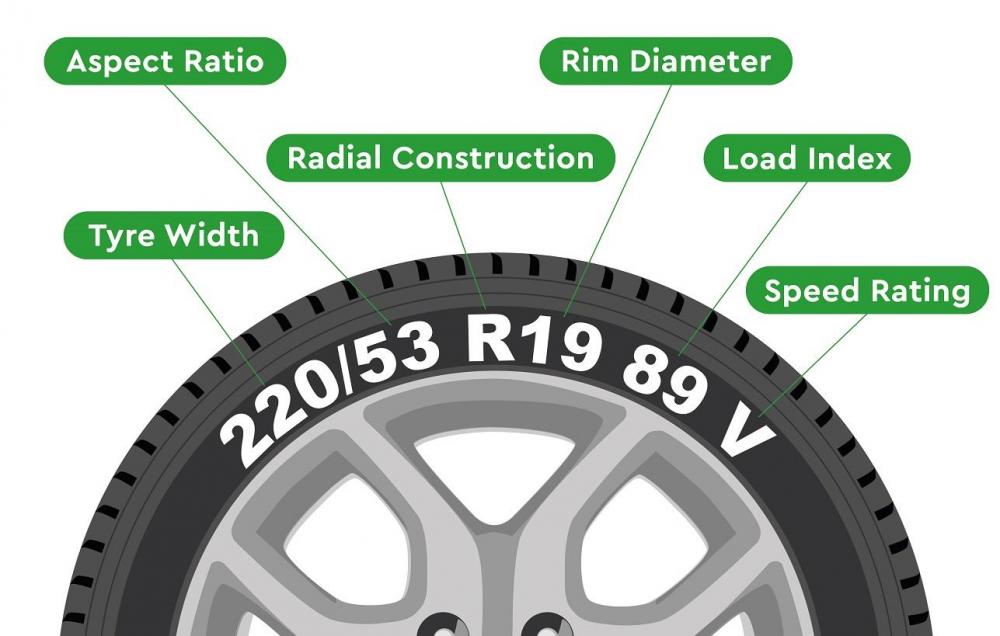 The load index tells us how much weight, in pounds, the tire can support when fully inflated: P225/70R16 91S.
The load index tells us how much weight, in pounds, the tire can support when fully inflated: P225/70R16 91S.
It is called the load "index" because the figure doesn't tell us the precise number of pounds the tire can support, at least not by itself. Instead, the number corresponds to a specific load capacity listed in an index. Beginning with one and ending with 150, numbers in the load index represent carrying capacities of 99 to 7385 lbs.
Additionally, you may not find this number present on all tires. This is because the load index is not required by law to be printed on tires. If there is no load index measurement on your tires, check the owner's manual or contact your local Bridgestone tire dealer for more information.
The final figure in a tire size sequence is the speed rating indicated by a letter: P225/70R16 91S. Just as your load index number corresponds to a particular load, your speed rating letter corresponds to a specific speed capability based on a standardized laboratory test.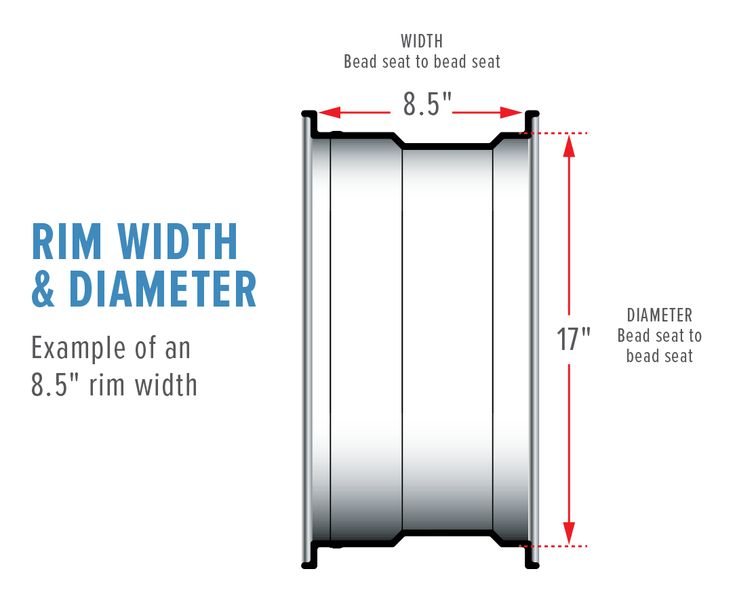
For example, a tire with a speed rating "S" is rated for up to 112 mph, while a tire rated "R" is up to 106 mph. Remember that this isn't a recommended cruising speed, but rather the maximum speed that tire type can withstand. Of course, you should always follow legal speed limits on roadways.
Here are the most common letters for speed ratings and their corresponding maximum speeds:
Tires with higher speed ratings tend to offer increased handling performance. Replacement tires must have the same or higher speed rating to maintain vehicle speed capability. If a vehicle has tires with different speed ratings, the speed rating of the "slowest" tire dictates the vehicle's top speed.
Like the load index, the speed rating is not required by law to be listed on all tires.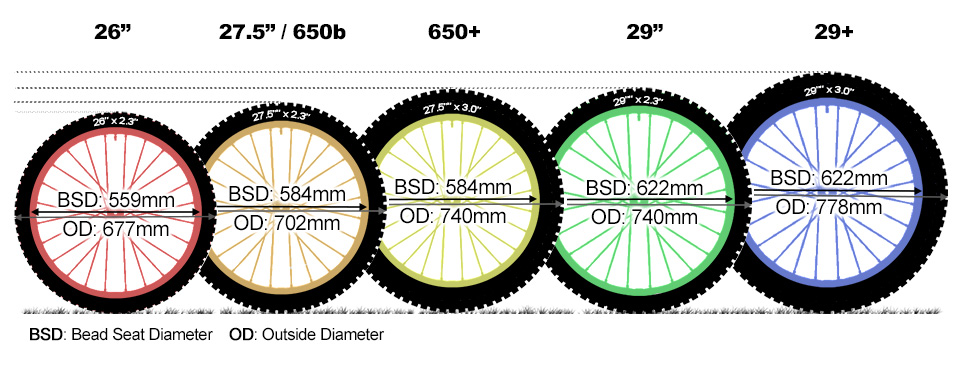 If your tires do not have the speed rating listed, your owner's manual will have the relevant information for your model's stock tire type.
If your tires do not have the speed rating listed, your owner's manual will have the relevant information for your model's stock tire type.
You may find "M+S" or "M/S" after the main tire size sequence on some tires. This indicates that the tire has some capacity to handle snow and mud conditions. This indication is common on most radial or "R" type tires.
You may notice another set of letters and numbers on your tire's sidewall beginning with "DOT." This is not an indication of tire size, but rather that the tire complies with Federal Motor Vehicle Safety Standards. The "DOT" stands for Department of Transportation and is followed by the tire identification number.
The first two letters or numbers after DOT refer to the manufacturing plant where the tire was produced and the last four numbers indicate the week and year the tire was made. The numbers 4318, for instance, indicate that the tire was manufactured during the 43rd week of 2018.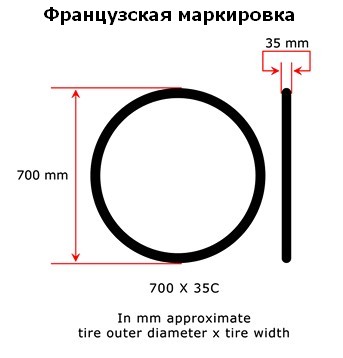
While it's certainly possible to upgrade your tires' size, it's usually best to stick to your manufacturer-recommended tire size for optimal performance. Increasing the size of your tires may give your car more ground clearance, but it may also affect handling, drivetrain performance and fuel economy. Keep in mind the changes to key figures mentioned above, such as load index and speed rating, and how they may affect your vehicle's capabilities if you decide to increase tire size.
Once you know how to read the numbers on tires, you can explore tires by size and narrow down your tire options quickly. Compare tire sizes online or visit a Bridgestone tire dealer near you for help.
The wheels that came installed on your vehicle are designed to perfectly fit your vehicle’s suspension, gearing, and bodywork which can affect ride quality and vehicle performance. But that doesn’t mean you can’t have different wheels or rims installed on your car or truck. To understand what wheels will work for your vehicle, we’ll take a look at rim sizes and some basic measurements.
But that doesn’t mean you can’t have different wheels or rims installed on your car or truck. To understand what wheels will work for your vehicle, we’ll take a look at rim sizes and some basic measurements.
There are many reasons you might want to switch out your rims. Maybe you want an extra set of wheels and tires for easy installation every winter, or you’re looking for added performance and handling. You might even be going for a specific look, including sleek and stylish or rugged and cool. Whatever your reason, it’s important to note that getting the wrong wheel setup could cause a vibration, or some rubbing on suspension components or vehicle body parts.
Les Schwab Tip: Before you change the tire sidewall height, tread width, or rim size on your vehicle, talk to the experts first. We’ll help translate the difference in RPM, tire speed, load index, and speed rating and how it will or will not fit with your vehicle’s suspension, gearing, and bodywork.
First, start with the wheel size for your vehicle. You can find that on the sidewall of the tires on your original wheels or the inside frame of the driver’s door. Check out Tire Size Explained (Reading the Sidewall) for more.
The wheel diameter (in inches or millimeters) is the fifth set of numbers and letters. What do rim size numbers mean? This number represents the distance between the two bead seat areas where the tire is sealed onto the wheel.
The wheel size also includes its width and offset. The width is the distance from each bead seat (from inside to the outside). The offset determines how the wheel and tire set aligns with the wheel well.
The offset is how far inward or outward the mounting surface is in reference to the center-line of the wheel. The center-line is calculated by simply dividing the wheel into two equal halves. Les Schwab has the tools to accurately measure your center-line.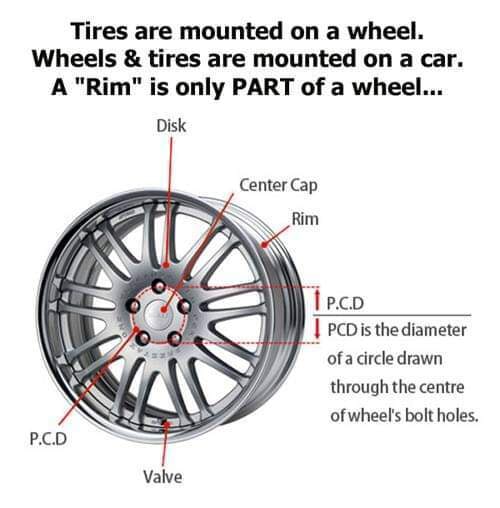
The offset is how far inward or outward the mounting surface is in reference to the center-line of the wheel.
Here's how offset determines the look of your rims. If the hub mounting surface is in front of the center-line, your rims and tire will be pulled inward. This is called positive offset.
If they are behind the centerline, your rims and tire will stick out from the body of the vehicle. This is negative offset.
Les Schwab Tip: Measuring the offset on your vehicle is difficult without removing the tire and wheel. Consult the pros to get the right fit.
To ensure a set of rims fit properly on your vehicle, you’ll need the hub size on your car or truck as well as the wheel center bore measurement and number of wheel studs (as well as the distance between those studs). Les Schwab has those measurements for your vehicle, including bolt patterns.
Most vehicles come with a 4-, 5-, 6-, or 8-lug pattern. These bolt patterns, which are specifically spaced, help narrow your wheel or rim choices. While counting the number of bolts on your vehicle is important before buying a set of rims, it’s vital the wheels you choose match the spacing between the wheel studs on your vehicle.
These bolt patterns, which are specifically spaced, help narrow your wheel or rim choices. While counting the number of bolts on your vehicle is important before buying a set of rims, it’s vital the wheels you choose match the spacing between the wheel studs on your vehicle.
To measure a 4-lug pattern on a set of rims, measure from the center of two holes across from each other. For a 5-lug pattern, measure from the outside of one wheel stud hole and the center of the opposite. And for 6- and 8-lug patterns, measure from the center of one hole to the center of the opposite wheel stud hole. You’ll either need this measurement in inches or millimeters, depending on the wheel manufacturer.
Remember, there’s no need to take these measurements on your own. The pros at Les Schwab do it every day and can ensure you get the right rims for your vehicle.
At Les Schwab, we take pride in our custom wheel expertise. Stop by and ask about new wheels for your vehicle. We’ll show you all of your options, whether you’re going for a new look, a boost in performance, a new set of wheels for your winter tires, or simply as a replacement of your current set.
We’ll show you all of your options, whether you’re going for a new look, a boost in performance, a new set of wheels for your winter tires, or simply as a replacement of your current set.
Find A Store Near You
Tire and wheel size charts
| Diameter | Size | Rim width | ||
|---|---|---|---|---|
| Min. | Recommended mend. | Max. | ||
| 12 | 125 R12 | 3.5 | 3.0 | 4.0 |
| 135 R12 | 4.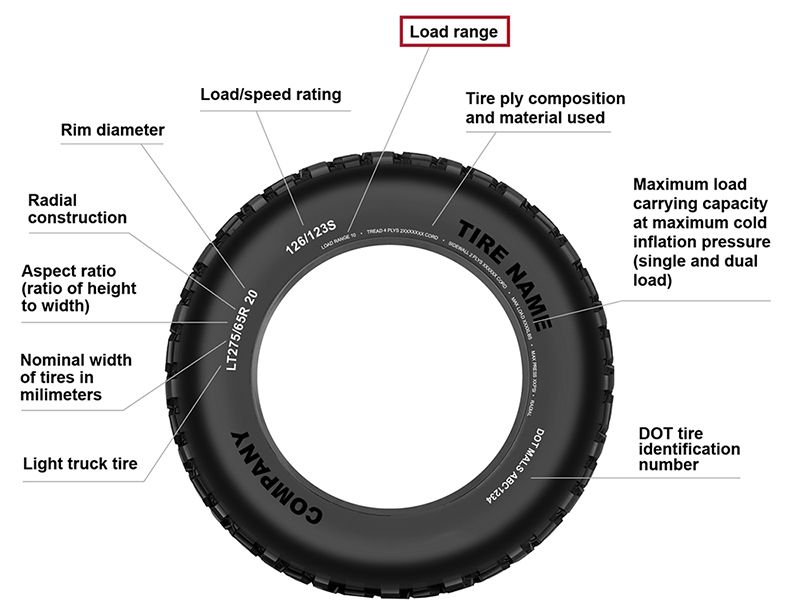 0 0 | nine0053 3.5 4.5 | ||
| 145 R12 | 4.0 | 3.5 | 5.0 | |
| 155 R12 | 4.5 | 4.0 | 5.0 | |
| 145/70 R12 | 4.5 | 4.0 | 5.0 | |
| 155/70 R12 | 4.5 | 4.0 | 5.5 | |
| 13 | 145/80 R13 | 3.5 | 4 | 5 |
| 145/70 R13 | 3.5 | 4.5 | 5 | |
| 145/60 R13 | 4 | 4.5 | 5 | |
| 155/80 R13 | 4 | 4.5 | 5 | |
| 155/70 R13 | 4 | 4.5 | 5 | |
| 165/80 R13 | 4 | 4.5 | 5 | |
| 165/70 R13 | 4 | 5 | 5.5 | nine0032|
| 165/65 R13 | 4.5 | 5 | 6 | |
| 175/70 R13 | 4. 5 5 | 5 | 6 | |
| 175/65 R13 | 5 | 5 | 6 | |
| 185/70 R13 | 4.5 | 5.5 | 6 | nine0032|
| 14 | 145/65 R14 | 4 | 4.5 | 5 |
| 155/65 R14 | 4.5 | 4.5 | 5.5 | |
| 165/70 R14 | 4 | 5 | 5.5 | |
| 165/65 R14 | 4.5 | nine0053 56 | ||
| 165/60 R14 | 4.5 | 5 | 6 | |
| 175/80 R14 | 4.5 | 5 | 6 | |
| 175/70 R14 | 4.5 | 5 | 6 | |
| 175/65 R14 | 5 | nine0053 56 | ||
| 175/60 R14 | 5 | 5 | 6 | |
| 185/70 R14 | 4.5 | 5.5 | 6 | |
| 185/65 R14 | 5 | 5.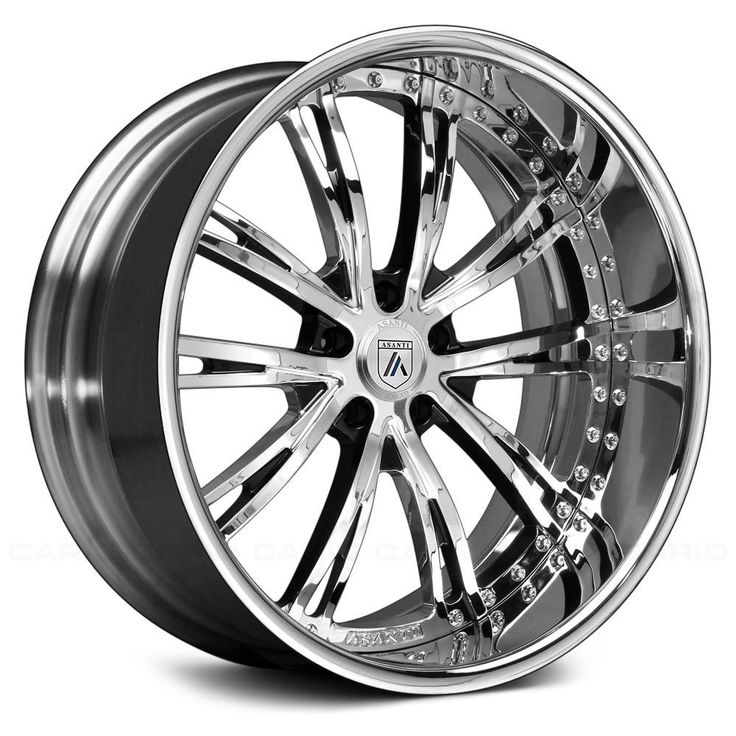 5 5 | 6.5 | |
| 185/60 R14 | 5 | nine0053 5.56.5 | ||
| 185/55 R14 | 5 | 6 | 6.5 | |
| 195/70 R14 | 5 | 6 | 6.5 | |
| 195/65 R14 | 5.5 | 6 | 7 | |
| 195/60 R14 | 5.5 | nine0053 67 | ||
| 15 | 145/65 R15 | 4 | 4.5 | 5 |
| 155/70 R15 | 4 | 4.5 | 5 | |
| 155/65 R15 | 4.5 | 4.5 | 5.5 | |
| 165/65 R15 | 4.5 | 5 | 6 | |
| 175/65 R15 | 5 | 5 | 6 | |
| 175/60 R15 | 5 | 5 | 6 | |
| 175/55 R15 | 5 | 5.5 | 6 | |
| 185/65 R15 | 5 | 5. 5 5 | 6.5 | |
| 185/60 R15 | 5 | 5.5 | 6.5 | |
| 185/55 R15 | 5 | 6 | 6.5 | |
| 195/70 R15 | 5 | 6 | 6.5 | |
| 195/65 R15 | 5.5 | 6 | 7 | |
| 195/60 R15 | 5.5 | 6 | 7 | |
| 195/55 R15 | 5.5 | 6 | 7 | |
| 195/50 R15 | 5.5 | 6 | 7 | |
| 195/45 R15 | 6 | 6.5 | 7.5 | |
| 205/70 R15 | 5 | 6 | 7 | |
| 205/65 R15 | 5.5 | 6 | 7.5 | |
| 205/60 R15 | 5.5 | 6 | 7.5 | nine0032|
| 205/55 R15 | 5.5 | 6.5 | 7.5 | |
| 205/50 R15 | 5. 5 5 | 6.5 | 7.5 | |
| 215/70 R15 | 5.5 | 6.5 | 7 | |
| 215/65 R15 | 6 | 6.5 | 7.5 | |
| 225/60 R15 | 6 | 6.5 | 8 | |
| 225/55 R15 | 6 | 7 | 8 | |
| 225/50 R15 | 6 | 7 | 8 | |
| 16 | 195/60 R16 | 5.5 | nine0053 67 | |
| 195/55 R16 | 5.5 | 6 | 7 | |
| 195/50 R16 | 5.5 | 6 | 7 | |
| 195/45 R16 | 6 | 6.5 | 7.5 | |
| 205/60 R16 | 5.5 | nine0053 67.5 | ||
| 205/55 R16 | 5.5 | 6.5 | 7.5 | |
| 205/50 R16 | 5.5 | 6. 5 5 | 7.5 | |
| 205/45 R16 | 6.5 | 7 | 7.5 | |
| 215/65 R16 | 6 | 6.5 | 7.5 | |
| 215/60 R16 | 6 | 6.5 | 7.5 | |
| 215/55 R16 | 6 | 7 | 7.5 | |
| 215/40 R16 | 7 | 7.5 | 8.5 | |
| 225/60 R16 | nine0053 66.5 | 8 | ||
| 225/55 R16 | 6 | 7 | 8 | |
| 225/50 R16 | 6 | 7 | 8 | |
| 235/60 R16 | 6.5 | 7 | 8.5 | |
| 245/55 R16 | nine0053 7.58 | 9 | ||
| 17 | 205/55 R17 | 5.5 | 6.5 | 7.5 |
| 205/50 R17 | 5.5 | 6.5 | 7. 5 5 | |
| 205/45 R17 | 6.5 | 7 | 7.5 | nine0032|
| 205/40 R17 | 7 | 7.5 | 8 | |
| 215/60 R17 | 6 | 6.5 | 7.5 | |
| 215/55 R17 | 6 | 7 | 7.5 | |
| 215/50 R17 | 6 | 7 | 7.5 | nine0032|
| 215/45 R17 | 7 | 7 | 8 | |
| 215/40 R17 | 7 | 7.5 | 8.5 | |
| 225/60 R17 | 6 | 6.5 | 8 | |
| 225/55 R17 | 6 | 7 | 8 | nine0032|
| 225/50 R17 | 6 | 7 | 8 | |
| 225/45 R17 | 7 | 7.5 | 8.5 | |
| 225/35 R17 | 7.5 | 8 | 9 | |
| 235/65 R17 | 6.5 | 7 | 8. 5 5 | nine0032 |
| 235/55 R17 | 6.5 | 7.5 | 8.5 | |
| 235/50 R17 | 6.5 | 7.5 | 8.5 | |
| 235/45 R17 | 7.5 | 8 | 9 | |
| 235/40 R17 | 8 | 8.5 | 9.5 | |
| 245/55 R17 | 7 | 7.5 | 8.5 | |
| 245/45 R17 | 7.5 | 8 | 9 | |
| 245/40 R17 | 8 | 8.5 | 9.5 | |
| 255/55 R17 | 7 | 8 | nine0053 9||
| 255/45 R17 | 8 | 8.5 | 9.5 | |
| 255/40 R17 | 8.5 | 9 | 10 | |
| 265/40 R17 | 9 | 9.5 | 10.5 | |
| 275/40 R17 | 9 | 9.5 | nine0053 11||
| 285/40 R17 | 9.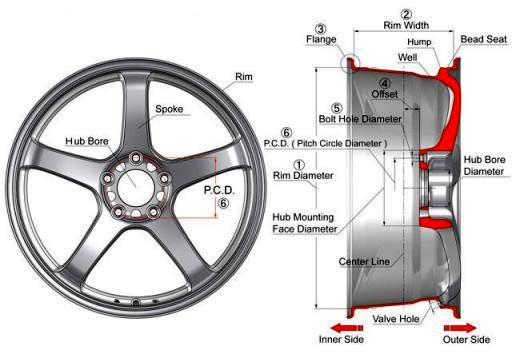 5 5 | 10 | 11 | |
| 335/35 R17 | 11 | 12 | 13 | |
| 18 | 205/40 R18 | 7 | 7.5 | 8 |
| 215/45 R18 | 7 | 7 | 8 | |
| 225/60 R18 | 6 | 6.5 | 8 | |
| 225/45 R18 | 7 | 7.5 | 8.5 | |
| 225/40 R18 | 7.5 | 8 | 9 | |
| 225/35 R18 | nine0053 7.58 | 9 | ||
| 235/65 R18 | 6.5 | 7 | 8.5 | |
| 235/50 R18 | 6.5 | 7.5 | 8.5 | |
| 235/45 R18 | 7.5 | 8 | 9 | |
| 235/40 R18 | nine0053 88.5 | 9.5 | ||
| 245/50 R18 | 7 | 7.5 | 8.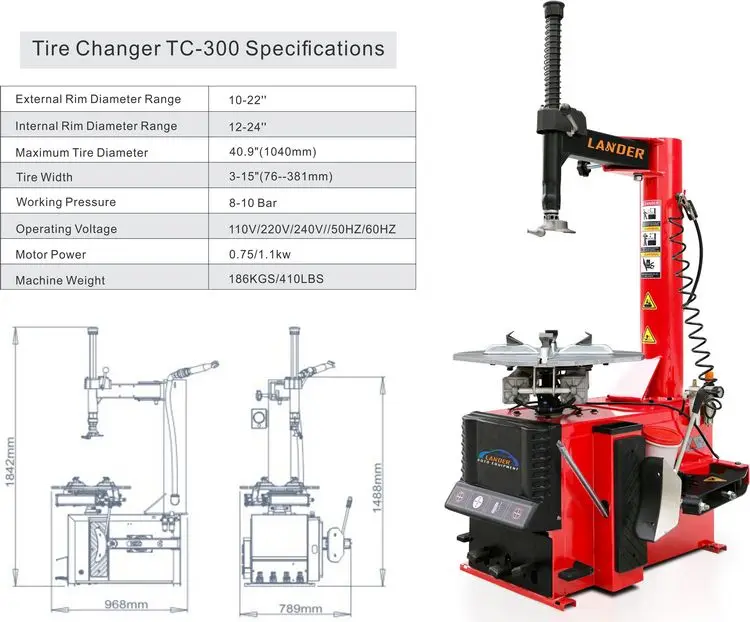 5 5 | |
| 245/45 R18 | 7.5 | 8 | 9 | |
| 245/40 R18 | 8 | 8.5 | 9.5 | |
| 245/35 R18 | nine0053 88.5 | 9.5 | ||
| 255/45 R18 | 8 | 8.5 | 9.5 | |
| 255/40 R18 | 8.5 | 9 | 10 | |
| 255/35 R18 | 8.5 | 9 | 10 | |
| 265/40 R18 | nine0053 99.5 | 10.5 | ||
| 265/35 R18 | 9 | 9.5 | 10.5 | |
| 275/45 R18 | 8.5 | 9 | 10.5 | |
| 275/40 R18 | 9 | 9.5 | 11 | |
| 275/35 R18 | 9 | 9.5 | 11 | |
| 285/40 R18 | 9.5 | 10 | 11 | |
| 285/35 R18 | 9. 5 5 | 10 | 11 | |
| 285/30 R18 | 10 | 10 | 10.5 | |
| 295/35 R18 | 10 | 10.5 | 11.5 | |
| 295/30 R18 | 10.5 | 10.5 | 11 | |
| 315/30 R18 | 11 | 11 | 12.5 | |
| 335/30 R18 | 12 | 12 | 12.5 | nine0032|
| 345/35 R18 | 11.5 | 12 | 13.5 | |
| 345/30 R18 | 12 | 12 | 12.5 | |
| 19 | 225/40 R19 | 7.5 | 8 | 9 |
| 225/35 R19 | 7.5 | nine0053 89 | ||
| 235/35 R19 | 8 | 8.5 | 9.5 | |
| 245/45 R19 | 7.5 | 8 | 9 | |
| 245/40 R19 | 8 | 8. 5 5 | 9.5 | |
| 245/35 R19 | 8 | nine0053 8.59.5 | ||
| 255/40 R19 | 8.5 | 9 | 10 | |
| 255/35 R19 | 8.5 | 9 | 10 | |
| 255/30 R19 | 8.5 | 9 | 9.5 | |
| 265/35 R19 | 9 | nine0053 9.510.5 | ||
| 265/30 R19 | 9 | 9.5 | 10 | |
| 275/50 R19 | 7.5 | 8.5 | 9.5 | |
| 275/40 R19 | 9 | 9.5 | 11 | |
| 275/35 R19 | 9 | 9.5 | 11 | |
| 275/30 R19 | 9 | 9.5 | 10 | |
| 285/35 R19 | 9.5 | 10 | 11 | |
| 295/30 R19 | 10.5 | 10.5 | 11 | |
| 305/30 R19 | nine0053 1111 | 12 | ||
| 315/25 R19 | 11 | 11.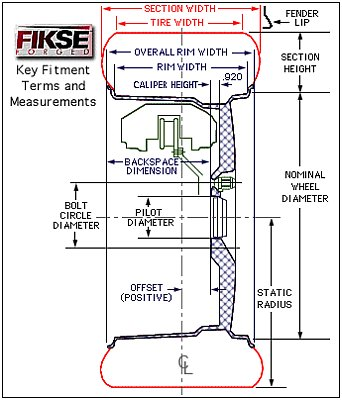 5 5 | 12 | |
| 325/30 R19 | 11 | 11.5 | 12 | |
| 345/30 R19 | 12 | 12 | 12.5 | |
| 20 | nine0053 235/30 R208.5 | |||
| 245/40 R20 | 8 | 8.5 | 9.5 | |
| 245/35 R20 | 8 | 8.5 | 9.5 | |
| 245/30 R20 | 8 | 8.5 | 9 | nine0032|
| 255/35 R20 | 8.5 | 9 | 10 | |
| 255/30 R20 | 8.5 | 9 | 9.5 | |
| 275/45 R20 | 8.5 | 9 | 10.5 | |
| 275/35 R20 | 9 | 9.5 | 11 | |
| 285/30 R20 | 10 | 10 | 10.5 | |
| 285/25 R20 | 10.5 | |||
| 295/25 R20 | 10.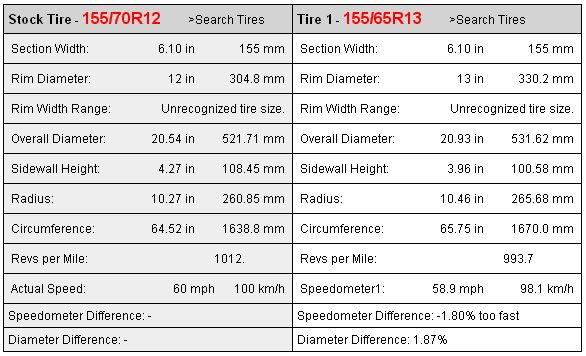 5 5 | 10.5 | 11 | |
| 305/35 R20 | 10 | 11 | nine0053 12||
| 305/25 R20 | 10.5 | 11 | 11.5 | |
| 325/25 R20 | 11.5 | 12 | 12.5 | |
| 335/30 R20 | 12 | 12 | 12.5 | |
| 21 | 245/35 R21 | nine0053 88.5 | 9.5 | |
| 255/30 R21 | 9 | 9 | 9.5 | |
| 285/30 R21 | 10 | 10 | 10.5 | |
| 295/25 R21 | 10 | 10.5 | 11 | |
| 22 | nine0053 255/30 R228.5 | 9 | 9.5 | |
| 295/25 R22 | 10.5 | 10.5 | 11 | |
| Diameter | Size | Rim width | ||
|---|---|---|---|---|
Min. | Recommended mend. | Max. | ||
| 15 | 185/65 R15 | 5 | 5.5 | 6.5 |
| 195/80 R15 | 5 | 5.5 | 6.5 | |
| 195/70 R15 | nine0053 56 | 6.5 | ||
| 205/70 R15 | 5 | 6 | 7 | |
| 215/80 R15 | 5.5 | 6 | 7 | |
| 225/75 R15 | 6 | 6 | 7.5 | |
| 235/75 R15 | nine0053 66.5 | 8 | ||
| 255/75 R15 | 6.5 | 7 | 8.5 | |
| 265/70 R15 | 7 | 8 | 9 | |
| 16 | 205/80 R16 | 5 | 5.5 | 7 |
| 215/70 R16 | 5. 5 5 | 6.5 | 7 | |
| 215/65 R16 | 6 | 6.5 | 7.5 | |
| 215/60 R16 | 6 | 6.5 | 7.5 | |
| 225/75 R16 | 6 | 6 | 7.5 | nine0032|
| 225/70 R16 | 6 | 6.5 | 7.5 | |
| 235/85 R16 | 6 | 6.5 | 7.5 | |
| 235/70 R16 | 6 | 7 | 8 | |
| 235/60 R16 | 6.5 | 7 | 8.5 | nine0032|
| 245/70 R16 | 6.5 | 7 | 8 | |
| 255/70 R16 | 6.5 | 7.5 | 8.5 | |
| 255/65 R16 | 7 | 7.5 | 9 | |
| 265/70 R16 | 7 | 8 | 9 | nine0032|
| 275/70 R16 | 7 | 8 | 9 | |
| 17 | 225/65 R17 | 6 | 6. 5 5 | 8 |
| 225/55 R17 | 6 | 7 | 8 | |
| 235/65 R17 | 6.5 | 7 | nine0053 8.5||
| 235/55 R17 | 6.5 | 7.5 | 8.5 | |
| 245/65 R17 | 7 | 7 | 8.5 | |
| 255/60 R17 | 7 | 7.5 | 9 | |
| 255/50 R17 | 7 | 8 | nine0053 9||
| 265/65 R17 | 7.5 | 8 | 9.5 | |
| 265/70 R17 | 7 | 8 | 9 | |
| 275/65 R17 | 7.5 | 8 | 9.5 | |
| 275/55 R17 | 7.5 | 8.5 | nine0053 9.5||
| 18 | 225/55 R18 | 6 | 7 | 8 |
| 235/60 R18 | 6.5 | 7 | 8.5 | |
| 235/50 R18 | 6. 5 5 | 7.5 | 8.5 | |
| 255/60 R18 | 7 | nine0053 7.59 | ||
| 255/55 R18 | 7 | 8 | 9 | |
| 255/45 R18 | 8 | 8.5 | 9.5 | |
| 265/60 R18 | 7.5 | 8 | 9.5 | |
| 285/50 R18 | 8 | nine0053 910 | ||
| 19 | 255/55 R19 | 7 | 8 | 9 |
| 255/50 R19 | 7 | 8 | 9 | |
| 275/45 R19 | 8.5 | 9 | 10.5 | |
| 285/45 R19 | nine0053 99.5 | 10.5 | ||
| 20 | 255/50 R20 | 7 | 8 | 9 |
| 275/50 R20 | 7.5 | 8.5 | 9.5 | |
| 275/40 R20 | 9 | 9.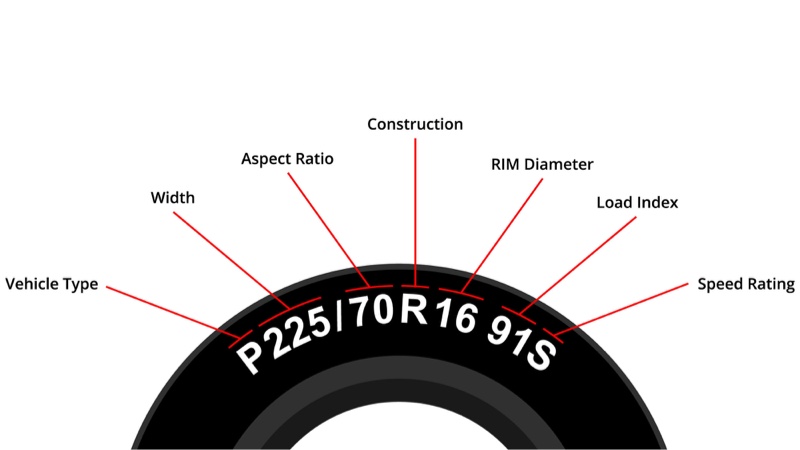 5 5 | 11 | |
| 295/40 R20 | 10 | 10.5 | 11.5 | |
| 315/35 R20 | 10.5 | 11 | 12.5 | |
| 21 | 295/35 R21 | 10 | 10.5 | 11.5 |
| 22 | 285/35 R22 | 9.5 | 10 | 11 |
| 295/30 R22 | 10 | 10.5 | 11 | |
| 23 | 315/25 R23 | 11 | 11.5 | 12 |
| Diameter | Size | Rim width | ||
|---|---|---|---|---|
| Min. | Recommended mend. | Max. | ||
| 13 | 155/80 R13 | 4 | 4. 5 5 | 5 |
| 165/70 R13 | nine0053 4.55 | 5 | ||
| 14 | 165/70 R14 | 4.5 | 5 | 5 |
| 165/75 R14 | 4 | 4.5 | 5 | |
| 175/65 R14 | 5 | 5 | 5.5 | |
| 175/75 R14 | 4.5 | 5 | 5.5 | |
| 185/75 R14 | 4.5 | 5 | 6 | |
| 185/80 R14 | 4.5 | 5 | 6 | |
| 195/75 R14 | 5 | 5.5 | 6 | |
| 195/80 R14 | 5 | 5.5 | 6 | |
| 205/75 R14 | 5 | 5.5 | 6.5 | |
| 15 | 185/80 R15 | 4.5 | 5 | 6 |
| 195/70 R15 | 5.5 | 6 | nine0053 6||
| 205/65 R15 | 5.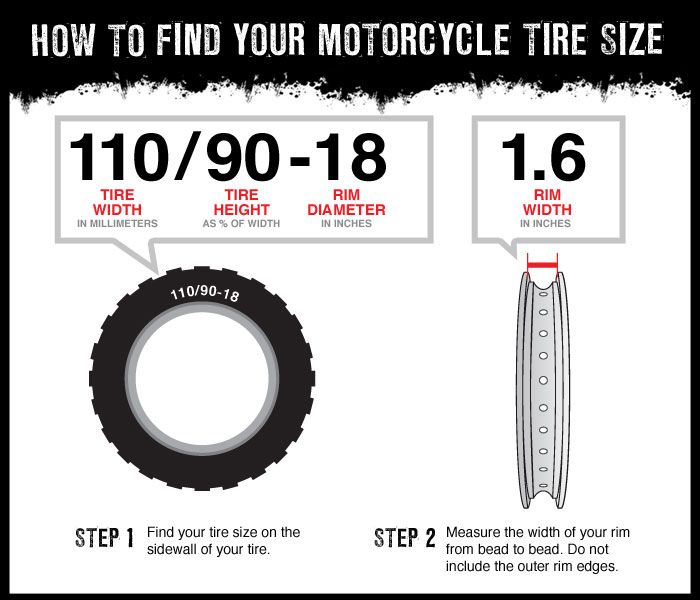 5 5 | 6 | 6.5 | |
| 205/70 R15 | 5.5 | 6 | 6.5 | |
| 215/65 R15 | 6 | 6.5 | 7 | |
| 215/70 R15 | 6 | 6.5 | nine0053 7||
| 225/70 R15 | 6 | 6.5 | 7 | |
| 16 | 6.5/100 R16 | 4.5 | 4.5 | 6 |
| 175/75 R16 | 4.5 | 5 | 5.5 | |
| 175/80 R16 | 4.5 | nine0053 55.5 | ||
| 185/75 R16 | 4.5 | 5 | 6 | |
| 195/60 R16 | 5.5 | 6 | 6.5 | |
| 195/65 R16 | 5.5 | 6 | 6 | |
| 195/75 R16 | 5 | nine0053 5.56 | ||
| 205/65 R16 | 5.5 | 6 | 6.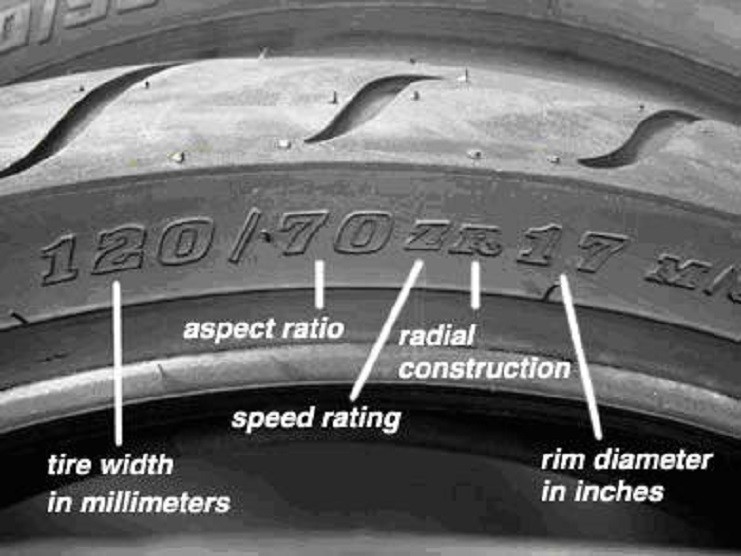 5 5 | |
| 205/75 R16 | 5 | 5.5 | 6.5 | |
| 215/60 R16 | 6 | 6.5 | 7 | |
| 215/65 R16 | 6 | nine0053 6.57 | ||
| 215/75 R16 | 5.5 | 6 | 7 | |
| 225/60 R16 | 6.5 | 6.5 | 7.5 | |
| 225/65 R16 | 6 | 6.5 | 7 | |
| 225/75 R16 | 6 | nine0053 67 | ||
| 235/65 R16 | 6.5 | 7 | 7.5 | |
You have successfully subscribed to receive news from the site sa.ru.
Go to your personal account
Enter name
By clicking the "Subscribe" button, I agree that I have read the terms of the privacy policy, and I agree to the processing of my personal data and receiving information and promotional materials
Be the first to know and get more benefits by subscribing to our newsletter. We organize informing our subscribers about all promotions and special offers in the first place.
We organize informing our subscribers about all promotions and special offers in the first place.
We use cookies to accommodate your preferences and improve the site. By continuing to use this site, you agree to our use of cookies .
There are several ways to designate the size and parameters of a tire, some manufacturers use inches, some millimeters, and some even both. The examples below will help you define the parameters yourself. nine0011
1. Tire width (cross-sectional width)
2. Tire height
3. Cross-sectional height
4. Rim diameter
5. Tire outside diameter
Example: 3.00-4, 3.50-6, 4.00-8, 5.20-10, 6.00-12….
The first digit (3.00) indicates the tire width. “-” indicates that the tire is bias-ply (a radial design would be R). The last digit (4) indicates the bore diameter in inches. So a 3.00-4 tire fits a 4" rim, is 3" wide, and has a diagonal design.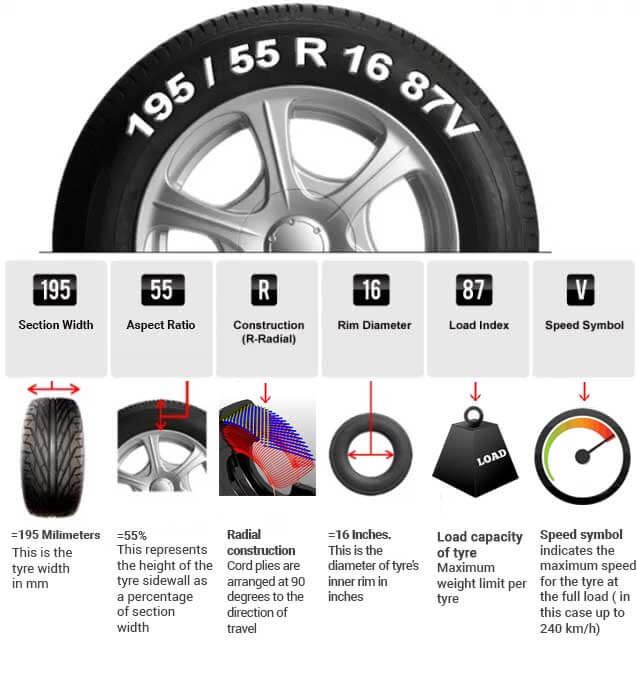 nine0011
nine0011
Example: 6-12, 7-14, 8-16, 9.5-18…
Same as above, but without (.00) in the first part of the size. All dimensions are in inches. It is important that tires with similar sizes may not be compatible - a tire with parameters 6.00-12 can be very different from a tire 6-12. If you doubt the definition of compatibility - contact the PROTEKTOR.RU managers
Example: 4.10/3.50-4, 4.10/3.50-6, 5.30/4.50-6…
This size consists of 4 parts. The first digit (4.10) indicates the tire width. The second (3.50) indicates the height of the tire. The third digit (4) indicates the fit diameter of the tire. “-” refers to the diagonal design of the tire. So a 4.10/3.50-4 tire is 4.1" wide, 3.5" high, fits 4" rims, and has a diagonal design.
Example: 11x4.00-4, 13x5.00-6, 18x8.50-8, 25x12.00-9…
The first number (11) is the outside diameter of the tire in inches. The second number (4. 00) is the width of the tire in inches, and the third number (4) is the rim diameter of the tire. “-” refers to the diagonal design of the tire. So a 11x4.00-4 tire is 11" OD, 4" wide, fits a 4" rim, and has a diagonal design. nine0011
00) is the width of the tire in inches, and the third number (4) is the rim diameter of the tire. “-” refers to the diagonal design of the tire. So a 11x4.00-4 tire is 11" OD, 4" wide, fits a 4" rim, and has a diagonal design. nine0011
Example: 10x3, 18x4, 260x85
This marking is obsolete, but you may still encounter it. Dimensions can be specified in both inches and millimeters (usually it is quite easy to distinguish this). The first number (10) indicates the outer diameter of the tire, the second the width of the tire. The seat diameter is not indicated in the size, but can be easily calculated, since the height of such a tire usually coincides with its width. Thus, an 18x4 tire has an OD of 18 inches, a width of 4 inches, and a rim diameter of 10 inches (18 inches of OD minus 2" x 4" of tire height). The modern designation for such a tire would be the formula 4.00-10. A tire with a size of 260x85 has an outer diameter of 260mm and a width of 85mm, or 10" and 3" respectively, with a 4" bore.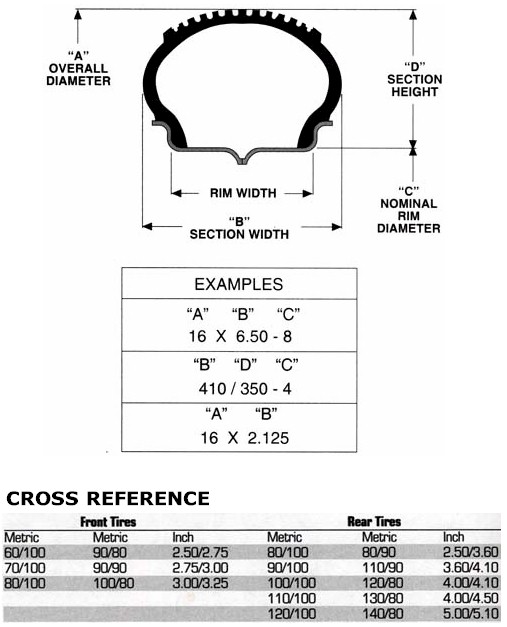 The modern designation would look like this: 3.00-4. nine0011
The modern designation would look like this: 3.00-4. nine0011
Example: 255/60-10, 195/50R13, 420/85R28
The first digit is the tire width in millimeters, the second is the profile height (percentage of the tire width), and the third digit is the bore diameter in inches. If the letter R is present in the size, this means that the tire has a radial design, and “-” indicates a bias. So a 420/85R28 tire has a width of 420mm, an 85% profile (the height of the tire is 85% of the width, i.e. 357mm), a radial construction and fits a 28" rim. nine0011
Example: 145R10, 155R12
The first number indicates the tire width in millimeters and the second number indicates the bore diameter (rim diameter) in inches. R indicates a radial construction, “-” indicates a diagonal one. With this marking, the tire profile is not indicated, and by default it is 80%. That is, a 145R10 tire is 145mm wide, 116mm high (80% of 145mm), fits a 10" rim, and has a radial design.